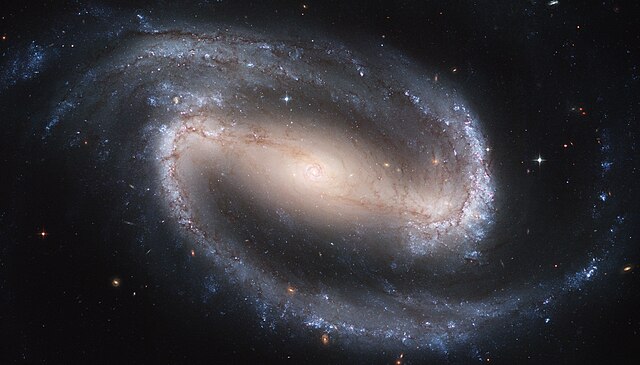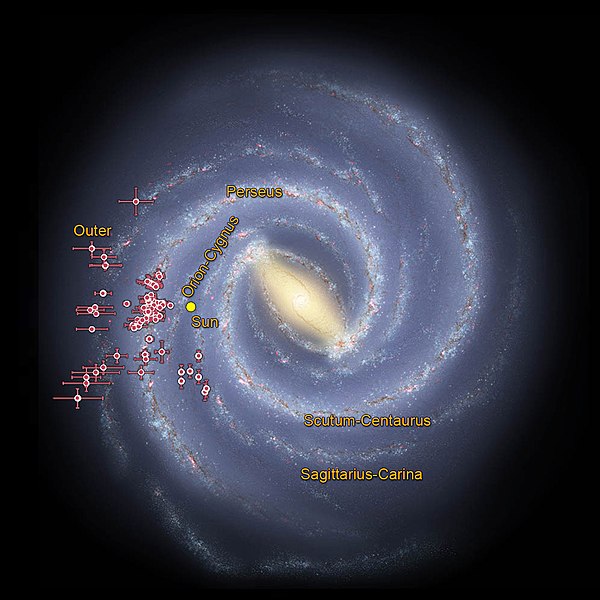A barred spiral galaxy is a spiral galaxy with a central bar-shaped structure composed of stars. Bars are found in about two thirds of all spiral galaxies in the local universe, and generally affect both the motions of stars and interstellar gas within spiral galaxies and can affect spiral arms as well. The Milky Way Galaxy, where the Solar System is located, is classified as a barred spiral galaxy.
NGC 1300, viewed nearly face-on; Hubble Space Telescope image
Barred spiral galaxy IC 5201, located more than 40 million light-years from Earth. It was discovered by Joseph Lunt.
Milky Way Galaxy spiral arms - based on WISE data.
NGC 7640 is a barred spiral galaxy in the Andromeda constellation.
Spiral galaxies form a class of galaxy originally described by Edwin Hubble in his 1936 work The Realm of the Nebulae and, as such, form part of the Hubble sequence. Most spiral galaxies consist of a flat, rotating disk containing stars, gas and dust, and a central concentration of stars known as the bulge. These are often surrounded by a much fainter halo of stars, many of which reside in globular clusters.
An example of a spiral galaxy, the Messier 77 (also known as NGC 1068)
Tuning-fork-style diagram of the Hubble sequence
Barred spiral galaxy UGC 12158
NGC 1300 in infrared light








